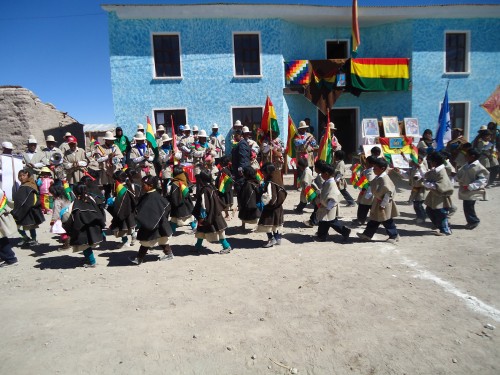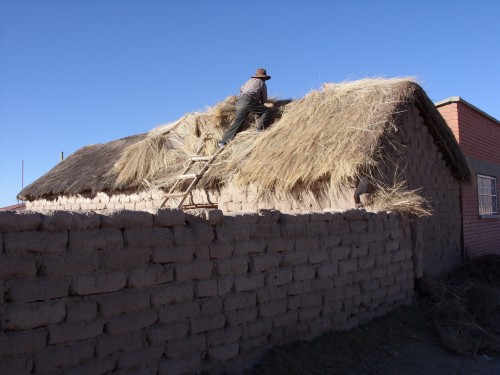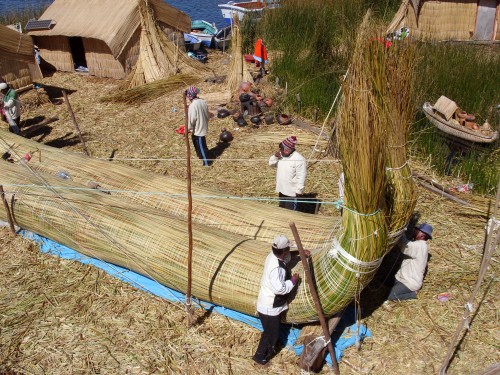In early colonial times the Uru people lived all along the shores of Lake Titicaca, Lake Poopó, along the Desaguadero River and near Lake Coipasa. Though living in a region with a long history of agriculture and sharing the environment with Aymara people (whose subsistence is based on agriculture and livestock farming), Uru people historically based their livelihood mainly on fishing, hunting waterfowl and collecting wild eggs. Today those traditions of fishing and hunting still maintain a high cultural value for all Uru groups, although their economic importance varies from group to group.
In the last decades the remaining formerly isolated Uru groups developed the feeling of common identity. Several meetings of all Uru groups took place, including meetings for the children were organized.
Chipaya and Ayparavi
The people of Chipaya and Ayparavi are the only group of the Urus which still maintains their traditional language. They are divided into four moieties or “ayllus” and they have a strong egalitarian tradition with an elaborated system of limiting and sharing power. Besides their traditions of fishing and bird-hunting, their subsistence is based on the cultivation of quinoa and cañawa (two Andean crops) and the breeding of sheep, llamas and pigs. Many people of Chipaya and Ayparavi temporarily or permanently migrate to Chile for wage labor, a tendency that increased after the beginning of the 1970s when the communities lost part of their land in struggles with neighboring Aymara communities.
Parade of children wearing traditional clothes in Santa Ana de Chipaya
Uru people of Lake Poopó
The Uru people of Lake Poopó live in three communities on the eastern shore of Lake Poopó. Although their subsistence is still based on fishing and hunting of waterfowl, nowadays men often migrate temporarily to the cities in search for work. The Uru people of Lake Poopó live in extreme poverty and suffer a strong discrimination from their Aymara neighbors. The contamination of Lake Poopó by mining companies, the pollution caused by an oil-spill after a rupture of a pipeline in the year 2000 and the effects of climate change are worsening their situation.
Man from Llapallapani repairing a reed roof
Uru people of Irohito
Irohito is a small community of Uru people located on the shore of the Desaguadero River near Lake Titicaca. In the 20th century they shifted to using the Aymara language. The last fluent speaker of their ancestral language, Julia Vila, passed away in the 2004. People still remember some words and expressions of this language and are planning a language revitalization project based on the variant spoken in Chipaya.
The people of Irohito have preserved their traditions of fishing and hunting, but in recent times there has been a decline of fish in the river. This has caused economic problems in the community as fish was the only resource they could sell to the market. To solve this problem, people of Irohito have started livestock production, feeding their animals with water plants they cut in the river. Nevertheless young people usually prefer to leave the village and move to the city of El Alto.
Juana Vila, sister of the last active speaker. She still remembers some words and phrases of the traditional language.
Uru people of the floating islands in the Bay of Puno
The Uru people living on the floating islands in the Bay of Puno, Peru, are the best situated group economically. Their islands have become one of the major tourist attractions of the country. They speak Aymara as their mother tongue. It is common among the Uru people to study tourism and foreign languages in the nearby city of Puno.
Construction of a balsa boat on the floating islands
Nowadays these boats are used for the transport of tourists between the floating islands. Traditionally constructed entirely of totora (a sort of reed) today these boats are usually filled with empty plastic bottles which increases their load capacity and their life period.






